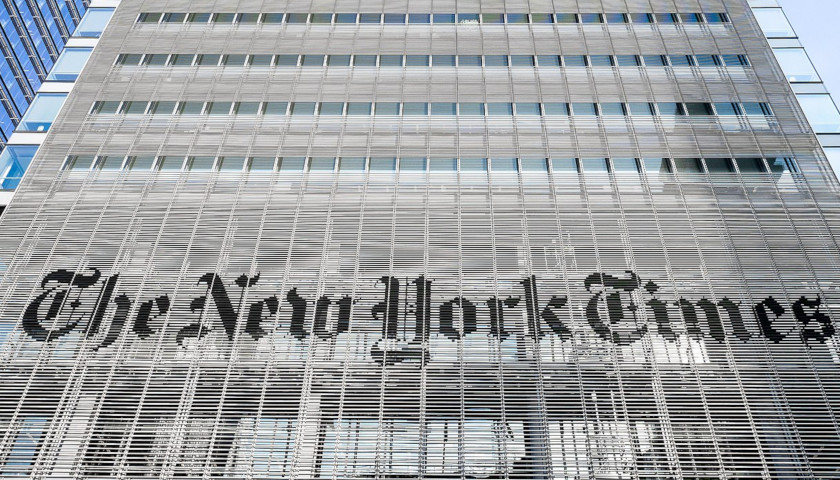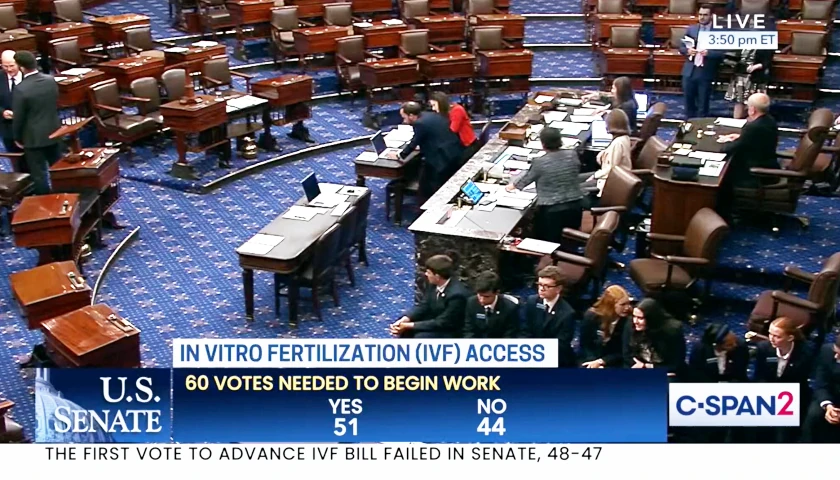by Jarrett Stepman
Is The New York Times a media outlet or an activist organization?
It appears that it’s leaning toward activism. A recent town hall meeting of Executive Editor Dean Baquet and Times staffers revealed a publication struggling to maintain any meaningful independence from its aggressively left-wing readership and staff.
The leaked transcript is well worth reading, as it demonstrates how far-left voices now dominate the direction of the Times and how closely the newspaper’s work aligns with the progressive political strategies of the moment.
If you care about journalism, or the First Amendt, READ the transcript. The Editor says (in effect) “for 2 yrs, we covered ‘Russia, Russia, Russia,’ facts be damned; now we’ll scream ‘racism, racism, racism’ for 18 mos, and the rest of the media follow us.” That’s not journalism. https://t.co/TPkpB0DjNj
— Ted Cruz (@tedcruz) August 18, 2019
The paper’s left-leaning readership, which includes many self-styled progressive politicians, earlier this month pushed the Times to change a Page One headline for a news story about President Donald Trump’s official remarks about the El Paso shooting.
The original headline read: “Trump Urges Unity Vs. Racism.”
Editors soon changed it to “Assailing Hate, but Not Guns” after the Times was inundated by criticism from readers and, according to reports, angry staff members.
Many critics were furious that the paper didn’t outright call Trump a “racist.”
Was there any meaningful pushback to this attempt to label the president a racist? No.
Instead, Baquet simply noted at the meeting that outright labeling the president a racist wasn’t the most effective tack, and that implying or demonstrating that he is a racist was more powerful.
On top of discussing headlines and wording in articles, Baquet addressed the Times’ coverage strategy going forward.
It appears that the newspaper was banking on the Trump-Russia collusion narrative to placate readers who are eager to see Trump removed from office.
The result of special counsel Robert Mueller’s 22-month investigation, though, left the publication “a little tiny bit flat-footed,” Baquet said.
“Our readers who want Donald Trump to go away suddenly thought, ‘Holy s–t, Bob Mueller is not going to do it,’” the executive editor said. “And Donald Trump got a little emboldened politically, I think. Because, you know, for obvious reasons. And I think that the story changed. A lot of the stuff we’re talking about started to emerge like six or seven weeks ago.”
What’s the new narrative? Race and racial division, apparently.
In the transcript of the meeting, one anonymous Times staffer says: “I’m wondering to what extent you think that the fact of racism and white supremacy being sort of the foundation of this country should play into our reporting. Just because it feels to me like it should be a starting point, you know?”
The staffer continues:
Like these conversations about what is racist, what isn’t racist. I just feel like racism is in everything. It should be considered in our science reporting, in our culture reporting, in our national reporting. And so, to me, it’s less about the individual instances of racism, and sort of how we’re thinking about racism and white supremacy as the foundation of all of the systems in the country.
Baquet responds by saying that “race in the next year is going to be a huge part of the American story,” and that the Times would begin a project to address it.
The newspaper’s recently released “1619 Project,” based on the arrival of African slaves in the British colony of Virginia, is clearly a big part of focusing coverage of American politics on race. While the project could be an important historical look at the history of slavery in America, it instead announces its revisionist intent from the very beginning:
The 1619 Project is a major initiative from The New York Times observing the 400th anniversary of the beginning of American slavery. It aims to reframe the country’s history, understanding 1619 as our true founding, and placing the consequences of slavery and the contributions of black Americans at the very center of the story we tell ourselves about who we are.
Despite denials from the project’s supporters, the ideological intent of the 1619 Project is clear and unfortunate, although predictable, given what is happening behind the scenes at the Times.
The @nytimes #1619Project is an obvious attempt to "reframe" America's past to fit the aims of a modern, left-wing political ideology. It's part of a longer-term process that I explain in my book, "The War on History," set for release on Oct. 1. https://t.co/BO3I0ffTUX
— Jarrett Stepman (@JarrettStepman) August 19, 2019
The fact that The New York Times is a progressive paper with a left-wing slant is fine. A publication can have an editorial line and still do objective, fact-based reporting.
But we shouldn’t be deluded into thinking, especially after the leak of this transcript, that the Times doesn’t have an obvious ideological bias and that its editorial decisions are not being swayed by its increasingly far-left staff and readers.
This shift should have been an obvious development to Americans, but now it couldn’t be clearer.
David Marcus, writing at The Federalist, summed it up nicely. Marcus wrote:
I read The New York Times, I enjoy it, sometimes I do the crossword, but to the extent I ever did, I can no longer see it as a straight paper with limited bias. This transcript makes that blatantly obvious. So, by all means, read the Times. But make sure you go in with your eyes wide open.
The New York Times essentially is bowing to leftist demands and becoming an activist organization. It has abandoned even the pretense of being dedicated to covering important news and evenhandedly informing readers.
– – –
Jarrett Stepman is a contributor to The Daily Signal and co-host of The Right Side of Historypodcast. Send an email to Jarrett. He is also the author of the soon-to-be released book, “The War on History: The Conspiracy to Rewrite America’s Past.”
Photo “New York Times Building” by Ajay Suresh. CC BY 2.0.






Has Mr. Delzell actually read the transcript of the “town hall” meeting? If not, he should, because it removes all possible doubt about who the NYT is working for. If he has read it, and still has doubts, then we just have to write him off as someone who is too enamored by his own left-wing bias to be able to recognize it in a newspaper.
When and IF the TIMES works for the left, that will be a great day for me!